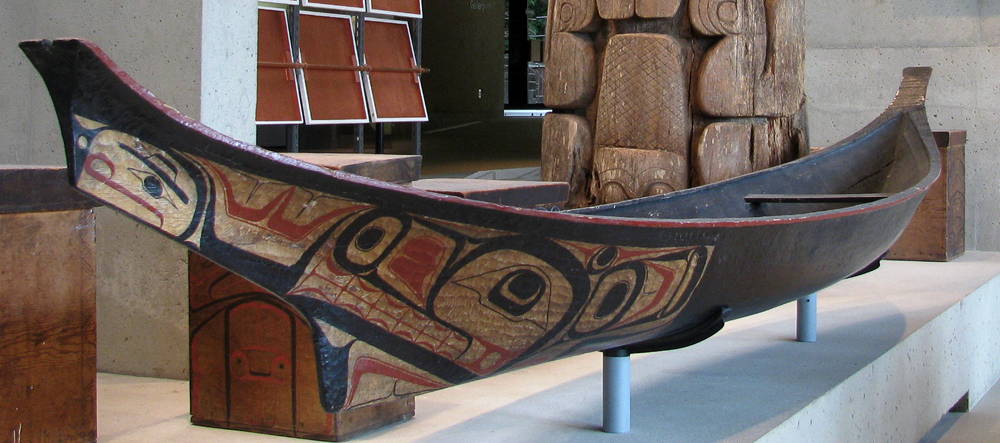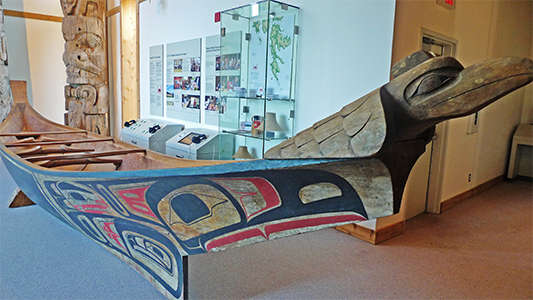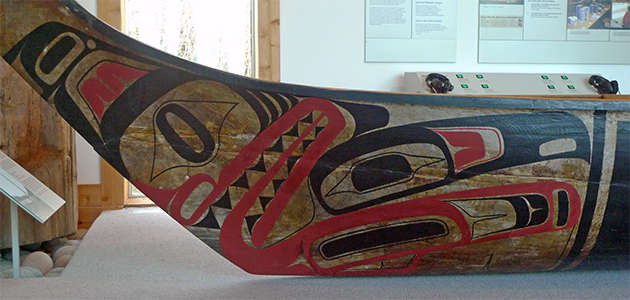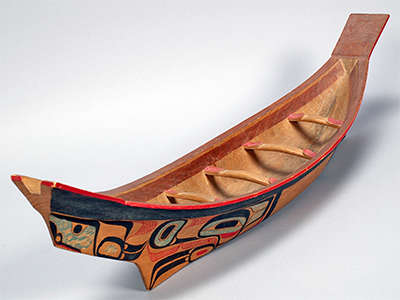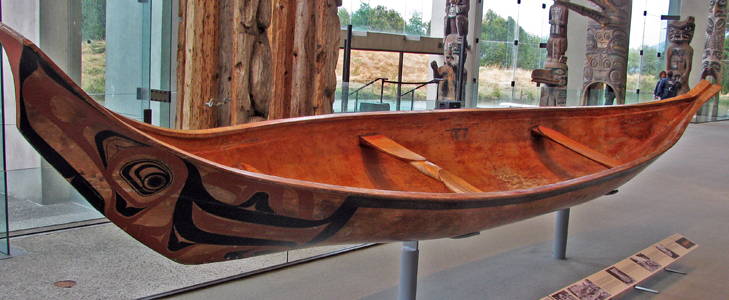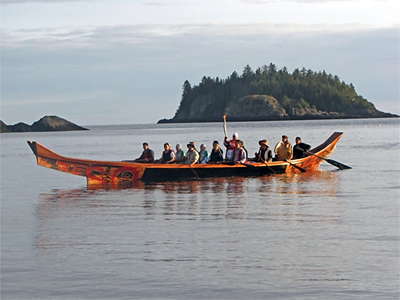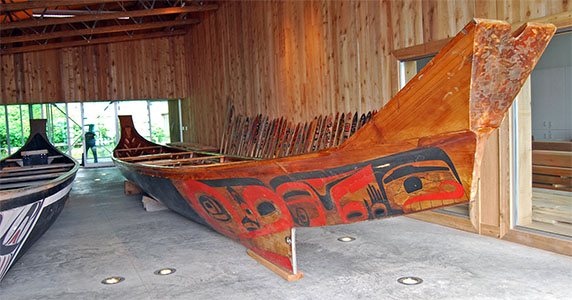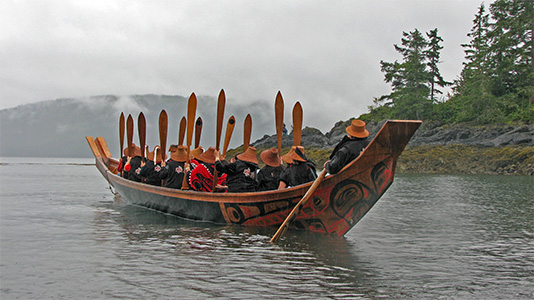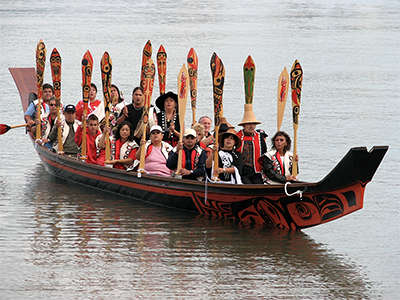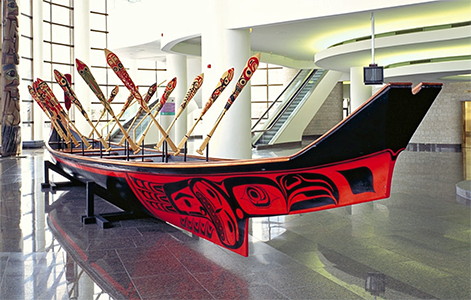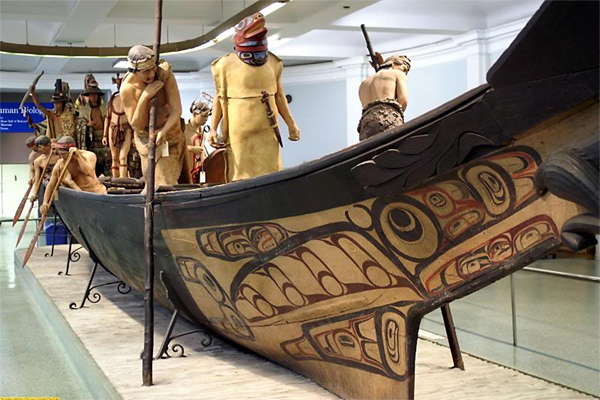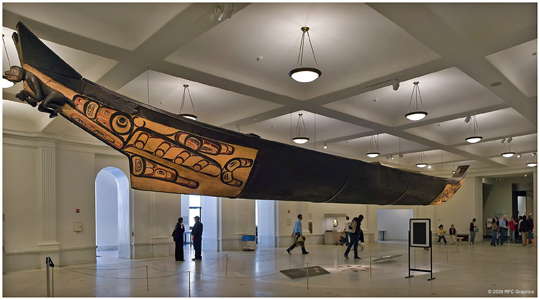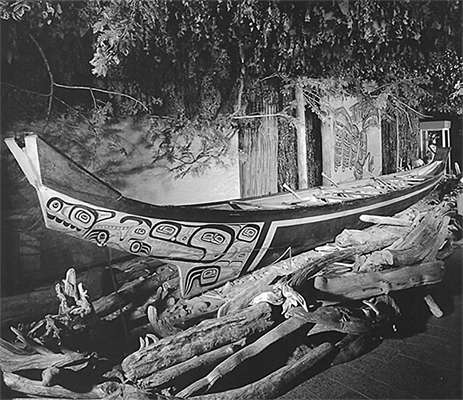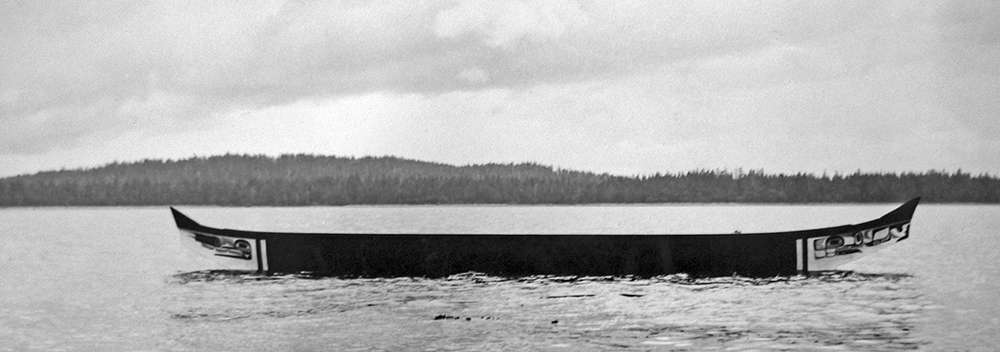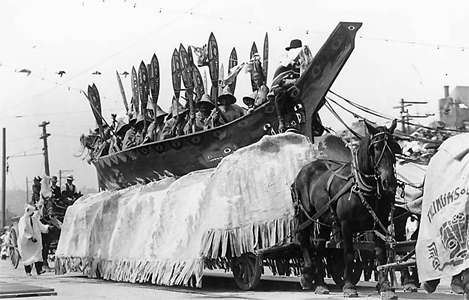Würde mich aber natürlich sehr freuen wenn du dabei wärst!
Spontan fällt mir nur Eureka ein, aber vielleicht gibt es da noch Möglichkeiten, die dir die anderen empfehlen können

Das sind die Jungs mit den TotempfählenDesigned for long journeys over open stretches of ocean, the northern nations needed a large craft with a high prow and vertical cutwater to throw off the waves. It also has flaring sides and a rounded bottom for buoyancy and speed.
Often, to give extra height to the sides and prevent waves from breaking over them, wash strakes in the form of long planks can be added to the gunwales from stem to stern with pegs and withes. Although being prototypical, this canoe has a variety of design forms, ranging from small, single- and two-person craft up to 70-foot ships for raids, wars, and freight. These Northern Canoes usually have a beam of between 5- and 9-feet. Characteristically, all of these canoes curve and swell near the bow, and the prow gracefully curves up from the water and can be adorned with elaborate crest carvings, while the stern is long and overhanging. The sides of the Northern Canoes often also have elaborate paintings along their lengths. Due to its mass, trim lines, and length, the Northern Canoe has the ability to rock along its length over long, rolling swells, as well as to cut through smaller waves.
 ,
, 

 .
.


Tlingit villages were always located on a sheltered bay from which there was a good view of the approaches. A shallow, sandy beach for landing canoes, convenient access to fresh water and salmon streams, hunting grounds, clam beds, berry patches, good timber and other special resources were also important. In the early 19th Century, such towns consisted of a row of large houses facing the water. The beach in front was crowded with canoes under mats and shelters, with fish racks, and with hunting and fishing tools, and with sundry gear. In pre-missionized villages, the beach was also respected as a major food source for shellfish, seaweed and other marine life. From the archaeological record, discarded shells and other waste was dropped between and behind the houses where it built characteristic middens and contributed to the drainage of the house sites. The village graveyard was located either behind or at one end of the row of houses, or on a small nearby island. In southern Tlingit villages these graveyards were replaced by tall mortuary poles which stood beside or in front of the houses. In or behind the village were smokehouses for curing fish and meat, caches on tall poles or plank-lined pits for food and belongings, steambath huts, and small shelters for women during menstruation and childbirth. Wooden boxes containing the shamans’ paraphernalia were also hidden in the woods where they could do no harm. … By the beginning of the 19th Century, their winter village at the Russian trading depot of Sitka (New Archangel) was protected by a double palisade of tree trunks 15 feet high. This fort structure with palisades surrounding single houses or whole villages predominated in the Alaska Panhandle up until the time when Russian and American cannons rendered such fortifications useless. … The Tlingit house itself is generally rectangular, with a low-pitched gable roof. It is of two-beam construction with four main house posts. The Tlingit developed their own unique method of achieving the slopes of their roofs by topping the two main beams with a superstructure which, in turn, supports two additional smaller beams, on top of which there is a second superstructure supporting a yet smaller ridgepole. This ridgepole is interupted to allow for the smoke hole opening over the central fire pit. This configuration is unique to the Tlingit, and the material of choice for all of these structural members is Western Red Cedar. However, in much of the Tlingit territory, Western Red Cedar does not grow profusely so, where none was available in the past, it had to be procured through trade with either the Tsimshian or Haida.
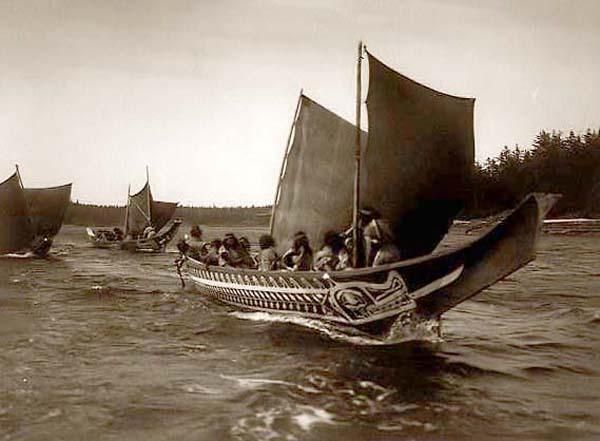
Hmm, das ist dann wohl tragisch (im eigentlichen Sinne, also selbstverschuldet) ...additz hat geschrieben: Di 23. Okt 2018, 09:03 Kaum bist Du hier, mein lieber Leosthenes, streust Du Salz in meine offenen Wunden …
Julian hatte sie auch schon mit dem Hinweis auf Eureka aufgerissen…
Jetzt bleibt mir als Ausrede nur noch die Aussage, dass es schließlich diese wunderschönen Totempfähle und Kanus nicht in Zinn gibt …
Diese Armee ist ganz sicher ein optischer Leckerbissen

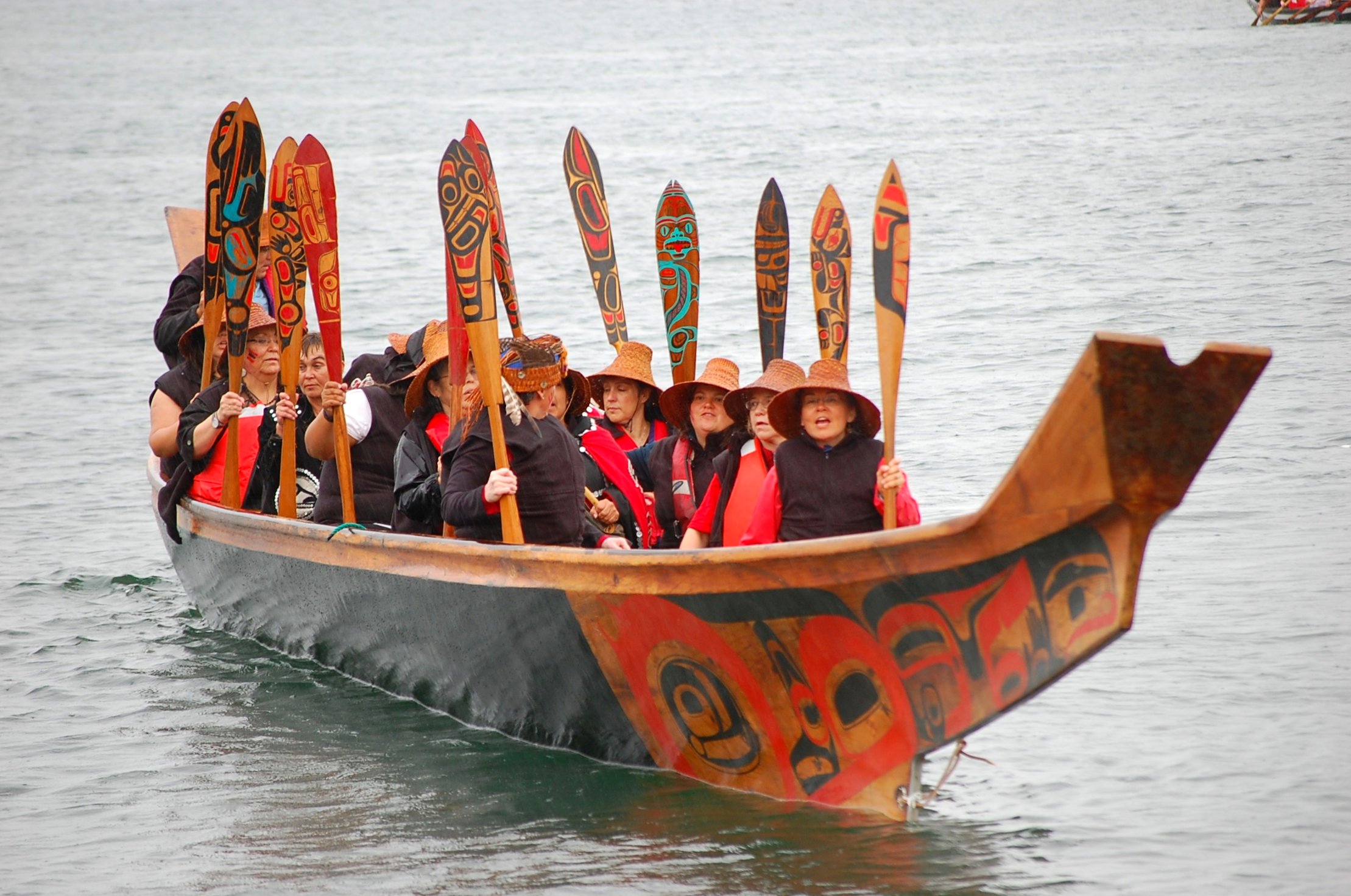
Totempfähle kann man selber basteln, Axel!additz hat geschrieben: Di 23. Okt 2018, 09:03
Jetzt bleibt mir als Ausrede nur noch die Aussage, dass es schließlich diese wunderschönen Totempfähle und Kanus nicht in Zinn gibt …
